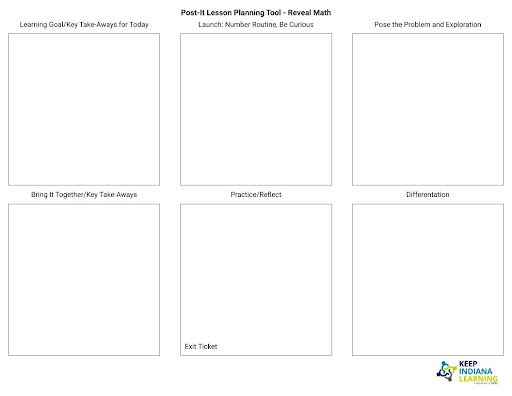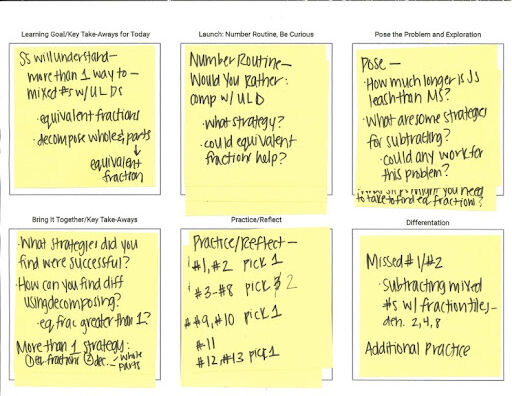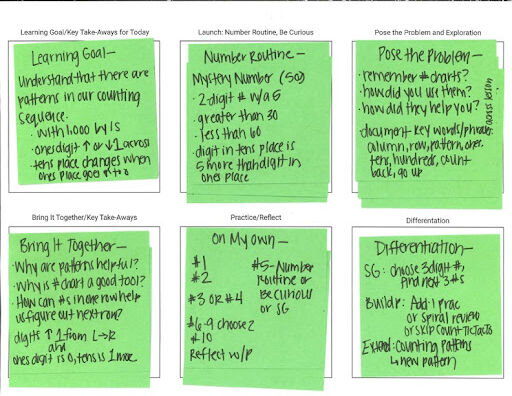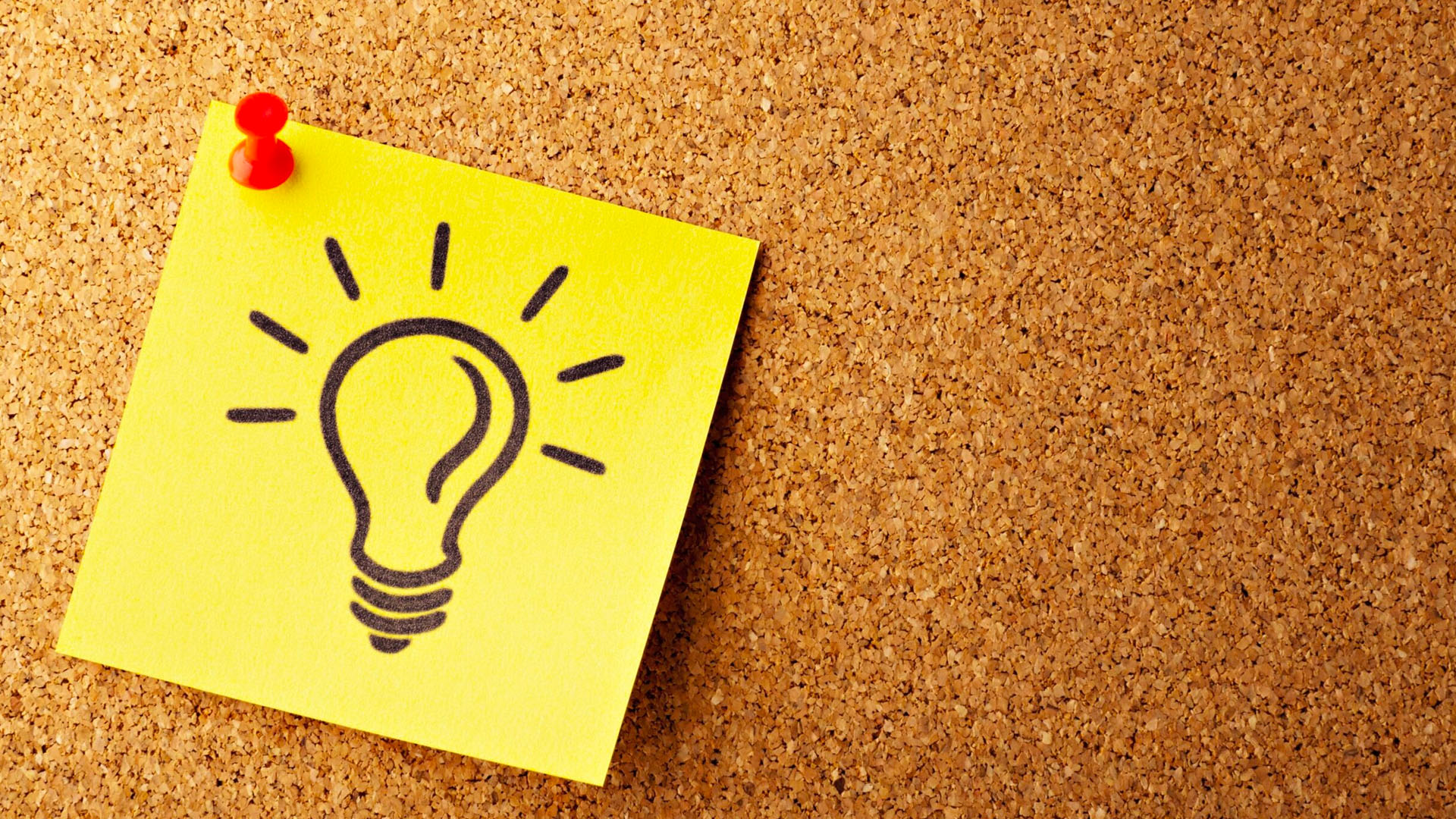One of my favorite teaching tools are the planners I create to organize my lessons. I am the kind of person who needs to read a lesson from a resource, synthesize the most important information from the resource, and then organize the ideas and tasks in ways that allow me to teach effectively. My current favorite way to plan is using a sticky note planner. My planner typically has six square sections, and each section aligns to a different part of my lesson. I use sticky notes to jot down the important information for each part of the lesson, and place those sticky notes on my planner. The Sticky Note Planner is one of my favorite planning tools, and it has helped me to effectively and efficiently plan for my students.

“Purposeful planning is a key component for high-quality instruction.”
The sticky note planner is a deceptively simple planning tool. At the surface level, it is a place to store notes for an upcoming lesson. But, when we dig deeper, we can see the planner plays an important role in purposeful and intentional planning. Purposeful planning is a key component for high-quality instruction. When we think about planning with intention, we need to think about the learning goal for students, how we will know when students have met the learning goal, and the role each component of our lesson plays in advancing students toward the learning goal. The sticky note note planner efficiently captures each of these important components, while also being easily used as a resource during instruction. Getting started with this type of planning is pretty simple. All you need is a piece of paper and some sticky notes!
Step 1: Determine the Sections
The first step is to create sections on the planner. I always start with a space for the Learning Goal of the lesson. The Learning Goal is what I want students to understand by the end of my lesson. Creating a space for the Learning Goal serves as a reminder of my focus for the day. This Learning Goal becomes my guidepost for every instructional decision I make across the rest of my planner. I then create spaces for each component (or part) of my lesson. For example, I might have a mini-lesson, small groups, and an intervention time. Or a warm-up, core lesson, independent practice, and differentiation. I allow the adopted resource to guide the sections I create with my planner. Once I have a space for each part of the lesson, I am ready for step 2.
Step 2: Unpack the First Part of the Lesson Paying Attention to the Learning Goal Now is the time to read, or skim, the first part of the lesson. As I read through the lesson component I consider two main questions:
- How is this part aligned to today’s Learning Goal?
- How long might I spend on this part of the lesson?
Using one or two sticky notes for each component, I jot down the most important things I want to remember about this specific part of the lesson. I keep in mind the Learning Goal, and the amount of time I have for this part of the lesson, as I work to make decisions about how I will use (or not use) the lesson resources to help students work toward my Learning Goal. I make decisions about the questions I will ask, the problems or work students will complete, and how I will measure growth toward the learning goal.
Step 3: Keep Unpacking, Part-By-Part, Paying Attention to the Learning Goal
I continue reading through each part of the lesson, one part at a time, and use a sticky note or two to jot down the most important things I want to remember about each part of the lesson. I also make sure to stay focused on my two important questions:
- How is this part aligned to today’s Learning Goal?
- How long might I spend on this part of the lesson?
By the end of Step 3, I have filled up my sticky note Planner with sticky notes containing a synthesized version of my lesson. This tool then becomes my teaching support as I work through the lesson with my students.


“Using this planning tool supports me in staying focused on my Learning Goal across the lesson.”
Step 4: Use the Sticky Note Planner
This tool becomes my resource while I am teaching my students. I carry this planner with me or place it near where I will be teaching. The tool provides me with at-a-glance support for the instructional experience I provide my students. The sticky note planner is the most effective way I have found to plan for my instruction. Using this planning tool supports me in staying focused on my Learning Goal across the lesson. It also ensures I can focus more on my student learning because I am spending less energy on making surface-level instructional decisions (i.e., which problems should students solve, what questions can I ask, how much time do I have, etc.). Of course, I will still be responsive to my students’ needs and adjust my lesson; but, this sticky note planner provides an outline of decisions I have already made, which gives me more brain power to think about what my students are learning and how I can make learning stronger across a lesson. I have found that this method has been much more effective for me than having my curricular resources with me or trying to memorize every decision I made in my planning. The sticky note planner allows my brain to be more focused on what my students are learning and how I can respond to their needs in the moment.
Resources
Please login or register to claim PGPs.
Alternatively, you may use the PGP Request Form if you prefer to not register an account.



